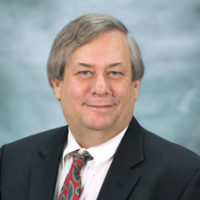In our last post on 3D scanning, we introduced Warren’s new Faro Focus X 330 three dimensional scanner. To recap, the Faro scanner combines three dimensional laser measurement with automated photography to capture 360-degree data from the real world. Potential applications include vehicle accident scenes and damaged vehicles, structural collapses, fire scenes, flood damage scenes, and machinery and equipment analysis, among others. In this post, we will highlight some of the outputs that can be created from the detailed data captured by the scanner.
In our last post, we highlighted the ability of our Faro SCENE processing software to take dimensional measurements from captured data. Another powerful visualization tool is the “flythrough”. A flythrough is a video file playable on any computer. The camera appears to “fly through”, or around, a building, incident scene, machine, or other item of interest. It can provide a smooth, animated overview of all sides of a machine, building, or scene, including viewpoints that may be difficult, hazardous, or impossible to generate by other means. Uses include general overview, demonstrating a driver’s or machine operator’s point of view, and virtual walkthroughs of buildings.

Figure 1: A Webshare screenshot showing a simulated high overhead view of the forklift looking through a workshop roof. This view would not be possible by any other means because the workshop has an opaque roof. In Webshare, the user can pan, zoom, and measure from this view. The green dots represent some of the scan locations used to generate this image. Clicking on a scan location in Webshare displays photographic imagery from that perspective.
Webshare-To-Go is an overview of the data captured by the Faro scanner that fits on a common USB flash drive and similar media. Webshare-To-Go runs in a version of Google’s Chrome browser that is prepackaged with each Webshare. The end user does not need to buy, download, or install any software in order to access the product. Within Webshare-To-Go, the user can view an overhead perspective of the object or scene of interest. Each scan location is identified. Clicking on a scan location provides a 360-degree panoramic view, as if the user were standing in that spot. The software can be configured to allow users to take the same distance and area measurements that can be generated by SCENE. Webshares can also include flythrough videos, photographs taken by other cameras, commentary related to specific details of any photograph, and other relevant documents such as onsite inspection notes.

Figure 2: A Webshare photograph from a scan captured from the safety of a balcony in the workshop. The scanner operator never had to climb directly above the forklift to create the shot in Figure 1. The Webshare user can pan, zoom, and measure from the photograph. The grey target icons represent other scan locations on the ground.
Figure 3: A 360 degree flythrough video of the forklift. The forklift has been digitally removed from the background clutter of the workshop. The forklift data could be placed in another simulated environment such as a truck interior or a warehouse.
Related Posts
Warren Adds Another Dimension of Engineering
John Phillips, PE, senior consulting engineer at Warren, has more than 30 years of crane and heavy equipment experience and more than 20 years of experience in forensic engineering. A licensed professional engineer in South Carolina, North Carolina, Georgia, Louisiana and Ohio, he’s NCEES registered both as a model engineer and with The United States Council for International Engineering Practice, USCIEP. John has designed crane systems, supervised installation, tested and certified lifting equipment even serving as a project engineer for maintenance and certification of nuclear weapon lifting and handling systems. John is a certified fire and explosion investigator and fire and explosion investigator instructor by the National Association of Fire Investigators. John is a member of the American Society of Materials and American Society of Testing and Materials, as well as a voting member of ASTM Ships & Marine Forensic Sciences, Forensic Engineering, and Performance of Buildings committees.



